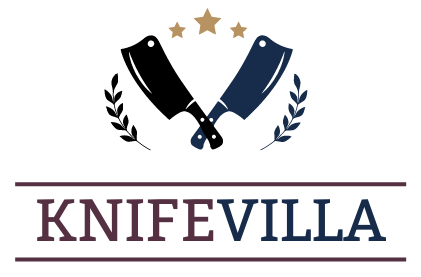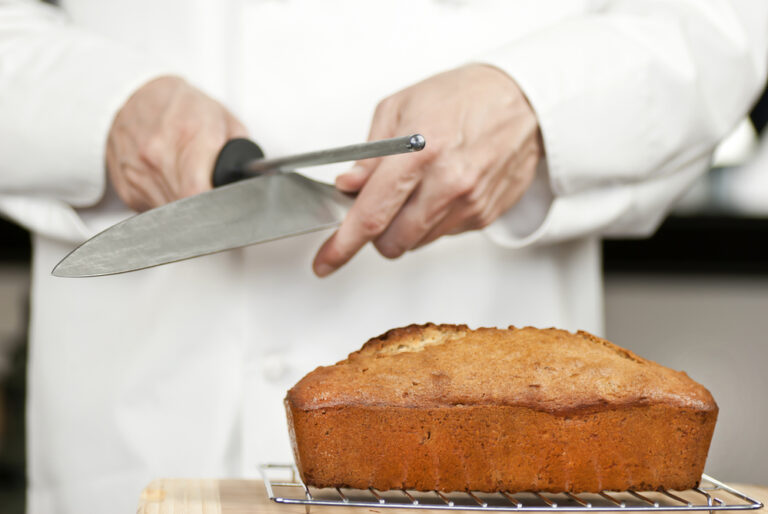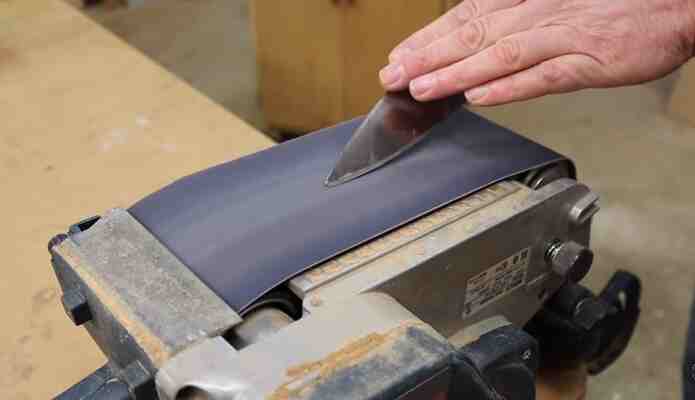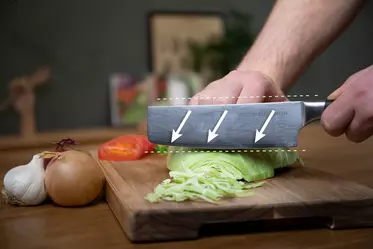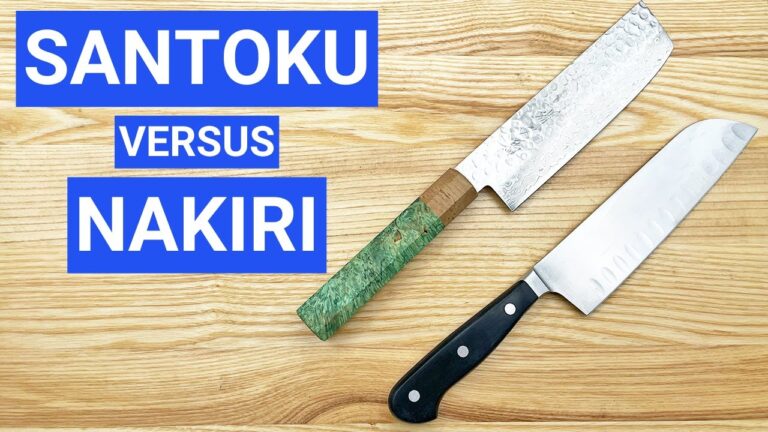The Chef’s Knife Vs. The Santoku Knife: What’s The Difference?
Both the Santoku and Chef knives are used for many functions by professionals. Santoku knife is also a type of chef knife and is highly adaptable for various purposes. They differ in size, function, and shape. The main difference is that a santoku knife is used for precise and thin cutting, while such kind of precision is difficult to achieve using Chef Knife. Santoku knives require a specific method of slicing in a front and backward motion. On the other hand, Chef Knife uses a rocking motion. Let us discuss the key differences between these two knives for a better understanding so that you might be able to choose the best of them.
What Is a Santoku Knife?
Santoku is a Japanese chef Knife made up of thin and hard steel. It is about an inch shorter than the standard 8-inch Chef Knife. The tip is pointed with a wide blade and it gives precise cuts. It is best for slicing vegetables with high efficiency.
Features Of Santoku Knife
Santoku knife has unique features, some of which are discussed below;
- The origin of Santoku is in Japan.
- The blade has no tip with a straight edge and a wide sheep foot.
- Slicing is more refined as compared to a chef knife due to the thin blade.
- Single (one-sided) or double (both sides) bevel.
- It has no bolster.
- Balanced weight.
- Easy to hold.
- No sticking of the blade with food.
- Ranges in size from 5 to 7.9.
The Uses Of A Santoku Knife
Santoku Knife is best used for mincing, slicing, and dicing with improved qualities. But it is difficult to chop large meat bones with precision. It is easy to handle due to its shorter blade length. It is used for;
- Cutting small meat.
- Slicing and mincing of meat, herbs, and cheese.
- Creation of precise cuts and slicing.
- Best for seafood, fruits, and vegetables.
- Dicing and chopping fruits, nuts, and vegetables.
Also read: Nakiri VS Santoku Knife: What’s the Difference?
How To Care For A Santoku Knife
The Santoku knife is an amazing choice and care should be taken while using it. It must be washed carefully to avoid rusting, corrosion, and any damage. You should keep it wooden knife block for protection. For sharp and precise edge retention there is a need to hone it.
What Is a Chef Knife?
Chef Knives are culinary knives with wide blades and heavy spines. They are heavy and difficult to hold as compared. It is difficult to use with short hands due to its heaviness.
Features Of A Chef’s Knife
The chef knife is a multi-purpose knife with the following features;
- It originated in Germany and France.
- It is heavy with a thick spine.
- It has a broad blade with a tip.
- Available in various varieties.
- Double bevel.
- It has a bolster.
- Difficult to hold.
- It has a granton edge.
- It comes in size range from 6 to 12.
The Uses Of A Chef’s Knife
A Chef’s knife is highly popular and versatile in nature. It works for many purposes for professionals. It cannot be used for frozen food and meat, peeling, and cutting meat bones. It can be used for;
- Separation and disjointing of chicken parts.
- For versatile cutting.
- Cutting and slicing of meat.
- Slicing cheese, chopping fruits and vegetables.
How to Care for a Chef Knife
Caring for a chef’s knife is necessary to maintain its sharpness. Hand washing is mostly recommended for it. Sharp it regularly. Store them properly when you are not using them.
The Differences In Caring For A Santoku And A Chef Knife
Proper cleaning, care, storage washing, and sharpening are necessary for better performance of knives. Hand washing is required for both the Santoku and Chef knives. You must clean them with a dry towel. The wooden box is mostly recommended for storage when not in use.
The key difference in the care of these knives lies in the methods adopted for sharpening.
Sharpening Of Knife
Sharpening maintains and restores the angle of the blade and it is also necessary for;
Safety of knife: Knives become less sharp and dull due to frequent use. For the safety and maintenance of the knife, it is essential to properly sharpen the knife after some period for efficient cutting.
The right finish: Sharp knives cut precisely and conserve the quality of food.
Pleasure: A sharp knife increases and improves the experience of chefs in the kitchen. It is the best feeling to work with a sharp knife rather than with a dull one.
Sharpening Of Santoku Knife
Santoku knives can be sharpened easily with less effort. They are single bevels and can be sharpened to an extent of 10-15 degrees. Wheatstone is preferred to sharpen them for a more sharp edge.
Following instructions must be entertained while sharpening Santoku knife;
- Fully dip and soak the whetstone in water.
- Hold the knife at the correct angle.
- Smoothly move the knife up and down.
- Fully cover the whole blade from the edge to the start of the handle.
- Repeat the process on both sides of the knife if it is double-beveled.
- Keep the stone flipping and repeat again.
- Wash the knife and dry it with a towel.
Sharpening Of Chef Knife
The chef knife is also sharpened with a whetstone or honing steel for a high Sharpe edge. It is sharpened to 15-20 degrees on both sides. Follow the given instructions to sharpen the chef knife;
- Hold the handle of the knife in your right hand and the steel in the other in a V shape. Put them upright.
- Place the blade’s heel against the steel right angle of around 2cm from the top of the steel.
- Exert the pressure on the blade tip by placing the knife down.
- The edge must touch the steel and repeat this 5 to 10 times.
- Repeat the procedure on another side of the blade.
Pros And Cons Between Chef’s Knife And Santoku Knife
Both these knives are multi-purpose but the choice may depend on the type of task you are performing. Here are some pros and cons between them which may help you to understand them better;
- The cutting of large meat pieces and precise cutting is not easy with a Santoku knife.
- A santoku knife is good for mincing garlic and chopping vegetables than Chef Knife.
- A chef knife provides maximum control and ease of use than a Santoku knife.
- The chef knife can be used to chop vegetables on a cutting board or butcher block more easily than Santoku.
- Less pressure is needed while using Santoku due to its low weight.
How To Choose Between Chef’s Knives Vs. Santoku? Final Words
Both these knives have their own features and functions. The choice depends upon the type of cut and purpose you need. If you are looking for precise cuts of vegetables, slices, and meats then use Santoku while for disjointing of meat and bones you must use Chef Knife. The chef knife is preferred for everyday uses in the kitchen. I hope this article helps you to choose the best between the two.
